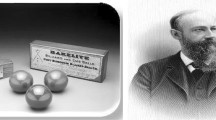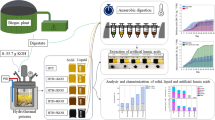Abstract
The decomposition of sunflower hulls and mixtures of sunflower hulls and other crop residues was examined under mesophilic (25°C) and thermophilic (50°C) temperatures during a 45-day incubation. Four treatments were set up: sunflower hull, sunflower hull+5% alfalfa, sunflower hull+5% vetch, sunflower hull+0.1% urea, to asses the efficiency of composting. Changes in total organic C (TOC), oxidizable C, N, pH, electrical conductivity (EC), and different fibre fractions—cellulose, hemicellulose and lignin—were determined. TOC decreased by 13–21% at 25°C and 25–41% at 50°C and the largest loss of C was for hulls amended with vetch residues and urea. Loss of oxidizable C was not affected by either the temperature or the treatments. The largest loss of cellulose occurred at 50°C in all the treatments. The hemicellulose content of the sunflower hulls alone and in the treatment with urea was significantly different with respect to the other treatments, whereas lignin content showed either a small increase (1.6% in sunflower hulls amended with alfalfa at 50°C and 1.8% in sunflower hulls with urea at 25°C) or a decrease of between 2.5% and 19% in the other treatments. The C/N ratio never fell below 50:1 and the highest decrease was for the thermophilic incubation. Increases in EC and pH values accounted for 3 and 1.5 units, respectively, and occurred after a 45-day incubation for mesophilic and thermophilic conditions. In general the incubation at 50°C facilitated the decomposition of sunflower hulls with high C/N ratios and little N addition.
Similar content being viewed by others
References
Adani F, Genevini PL, Gasperi F, Zorzi Z (1997) Organic matter evolution index (OMEI) as a measure of composting efficiency. Compost Sci Util 5:53–62
Aguirre ME, Grossi T, Commegna MA, Castro S, Santamaría R, Reyzábal ML (1998) Mineralización de la cáscara de girasol incorporada a suelos de diferente textura. XXII Congreso Argentino de Química, La Plata. pp 4–80
Berg B (2000) Litter decomposition and organic matter turnover in northern forest soils. For Ecol Manage 133:13–22
Biddlestone AJ, Gray KR, Day CA (1987) Composting and straw decomposition. In: Forster CF, Wase DA (eds) Environmental biotechnology. Wiley, New York, pp 135–175
Churchill DB, Bilsland DM, Elliott LF (1995) Methods for composting grass seed straw residue. Appl Eng Agric 11:275–279
Delhey R, Kiehr M, Frayssinet S, Badino H, Lusto J, Gaido E (2000) Supervivencia de Sclerotinia sclerotiorum en "cama de pollo" hecha con cáscara de girasol. 1st Jornadas de Horticultura del sur Bonaerense, Gral Cerri, Argentina
García C, Hernández T, Costa F, Ceccanti B, Masciandaro G, Calcinai M (1993) Evaluation of the organic matter composition of raw and composted municipal wastes. Soil Sci Plant Nutr 39:99–108
Genevini P, Adani F, Villa C (1997) Rice hull degradation by co-composting with dairy cattle slurry. Soil Sci Plant Nutr 43:135–137
Giger-Reverdin S (1995) Review of the main methods of cell wall estimation: interest and limits for rumiants. Anim Feed Sci Tech 55:295–334
Goering HK, Van Soest PJ (1971) Forage fiber analyses (apparatus, reagents, procedures and some applications). (Agriculture handbook no. 379) USDA-ARS, US Government Printing Office, Washington, D.C.
Gordon Dorrell D, Vick BA (1997) Properties and processing of oilseed sunflower. In: Schneiter AA (ed) Sunflower technology and production. Agronomy monograph no. 35. ASA, CSSA, SSSA, Madison, Wis., pp 709–745
Hammouda GHH, Adams WA (1989) The decomposition, humification and fate of nitrogen during the composting of some plants residues. In: Bertoldi M de, Ferranti MP, L´Hermite P, Zucconi F (eds) Compost: production, quality and use. Elsevier, London, pp 245–253
Haug RT (1986) Composting process design criteria. Part 3. Aeration. Biocycle 10:53–57
Haug RT (1993) Biological fundamentals. In: Haug RT (ed) The practical handbook of composting engineering. Lewis, Boca Raton, Fla., pp 121–159
Iiyama K, Lam TBT, Stone BA, Perrin PS, Macauley BJ (1995) Compositional changes in composts during composting and mushroom growth: comparison of conventional and environmentally controlled composts from commercial farms. Compost Sci Util 3:14–24
Jawson MD, Elliott LF (1986) Carbon and nitrogen transformations during wheat straw and root decomposition. Soil Biol Biochem 18:15–22
Kiehl EJ (1985) Fertilizantes orgânicos. Agronómica Ceres, Sâo Paulo, Brasil
Kögel-Knabner I (1993) Biodegradation and humification processes in forest soils. Soil Biol Biochem 8:101–135
Lindström LI, Pellegrini CN, Hernández LF (2000) Anatomía y desarrollo del pericarpio de distintos genotipos de girasol ( Helianthus annuus L.). Proceedings of the 15th International Sunflower Conference, Toulouse. D13–18
Line MA (1995) Compost recycling of wood fiber waste produced by paper manufacture. Compost Sci Util 3:39–45
Lynch JM, Wood DA (1985) Controlled microbial degradation of lignocellulose: the basis for existing and novel approaches to composting. In: Grasser JKR (ed.) Composting of agricultural and other wastes. Elsevier, New York, pp 183–193
Michel FC Jr, Reddy CA (1998) Effect of oxygenation level on yard trimmings composting rate, odor production, and compost quality in bench-scale reactors. Compost Sci Util 6:6–14
Nelson DW, Sommers LE (1980) Total nitrogen analysis for soil and plant tissue. J Assoc Off Anal 63:770–778
Sesay AA, Lasaridi K, Stentiford E, Budd T (1997) Controlled composting of papers pulp sludge using the aerated static pile method. Compost Sci Util 5:82–96
Summerell BA, Burgess LW (1989) Decomposition and chemical composition of cereal straw. Soil Biol Biochem 21:551–559
Tomati U, Galli E, Pasetti L, Volterra E (1995) Bioremediation of olive-mill waste waters by composting. Waste Manage Res 13:509–518
Van Soest PJ (1963) Use of detergents in the analyses of fibrous feeds. II. A rapid method for the determination of fiber and lignin. Assoc Off Anal Chem J 46:829–835
Vuorinen AH, Saharinen MH (1999) Cattle and pig manure and peat co-composting in a drum composting system. Microbiological and chemical parameters. Compost Sci Util 7:54–65
Yang HH, Effland MJ, Kirk TK (1980) Factors influencing fungal degradation of lignin in a representative lignocellulosic, thermomechanical pulp. Biotech Bioeng 22:65–77
Acknowledgements
This research was supported by a fellowship from the Comisión de Investigaciones Científicas (CIC) of the Province of Buenos Aires, Argentina.
Author information
Authors and Affiliations
Corresponding author
Rights and permissions
About this article
Cite this article
Conghos, M.M., Aguirre, M.E. & Santamaría, R.M. Biodegradation of sunflower hulls with different nitrogen sources under mesophilic and thermophilic incubations. Biol Fertil Soils 38, 282–287 (2003). https://doi.org/10.1007/s00374-003-0648-8
Received:
Accepted:
Published:
Issue Date:
DOI: https://doi.org/10.1007/s00374-003-0648-8




